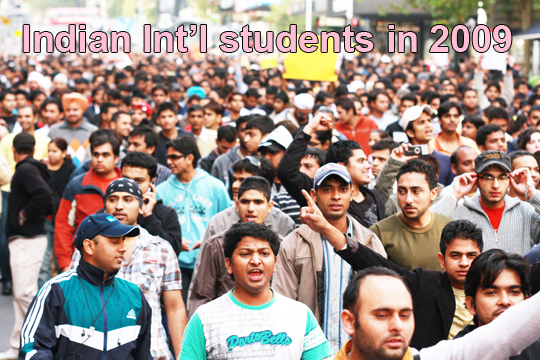Access to Australian International education made easier
Effective 1 July 2016, the application process for student visas has been streamlined and simplified.
Melbourne, July 24: Pre-July 2016, there were 7 student visa subclasses 570, 571, 572, 573, 574, 575 and 576 and these subclass resided on the type of course student was to complete – school, English language, vocational education, higher education certificate or PhD degree. Those subclasses have now been closed to new applications from 1 July 2016.
These new changes have been labeled by the Department of Immigration as the Simplified Student Visa Framework (SSVF).
Instead the two new subclasses are Sub-Class 500 (Student) and Sub-Class 590(Student Guardian). This new criteria is claimed to be more straightforward to understand for applicants, and applications will be lodged online in most cases.
Unlike under the old legislation, where it was only possible to lodge a student visa application from within Australia if a student was either holding a student visa or carried the lowest risk level (Assessment Level 1), from 1 July 2016, it has now been made possible to apply onshore for a student visa even if you were holding a Visitor visa, a Partner visa, Graduate Temporary Subclass 485 visa or even a working holiday visa without having to leave Australia.
The requirement “Main Enrolment” 9Condition 8202) has been changed. According to the department all students must meet the following 8202 requirement:
You must remain enrolled in a registered course (unless you are a Foreign Affairs or Defence sponsored student or secondary exchange student in which case you must maintain full-time enrolment in your course of study or training).
Note: A registered course is one that is on the Commonwealth Register of Institutions and Courses for Overseas Students (CRICOS).
You must maintain enrolment in a registered course that is the same level as, or at a higher level than, the registered course for which you were granted a visa.
From 1 July, condition 8202 prohibits students swapping to a lower course. Students can only study at the same AQF level or higher. For instance, an advanced diploma is at AQF level 6. Students can only study at AQF 6 or higher.
In particular, a student who swapped to a Certificate IV (AQF level 4) would be in breach of their visa.
You must maintain satisfactory attendance in your course and course progress for each study period as required by your education provider.
And the English language and financial capacity requirements have also been streamlined. If the education provider and/or your country of origin (passport) level are considered low risk, it will now be possible to lodge student visa application without evidence of English and financial resources.
English Requirement – changes explained:
The following student applicants will be exempt from English Language testing:
- Foreign affairs, defence or secondary exchange students
- Enrolled in an ELICOS course, school or post-graduate research course
- Who have substantially completed a Cert IV or higher in Australia
- If have completed 5 years of study in English medium in Australia, Canada, NZ, South Africa, Ireland, UK or USA
- Those who have completed Senior Secondary Certificate of Education in Australia
- Students who hold a passport from the UK, USA, Canada, NZ or Ireland
Financial Requirement
Students now only have to show financial capacity requirement for 12 months (down from 18). Now students who do not qualify as “low risk”, would need to show evidence of their financial capacity as follows:
- Living costs and course fees for the first 12 months of study and stay in Australia
- Travel expenses and income level of parents or spouse
Guidelines for living costs expenses for a 12 month period are as below:
- Student applicant – $19,830
- Partner or spouse – $6,940
- One dependent child – $2,970
- Schooling cost for a dependent child may be as much as $8,000.
Student applicant can show funds as deposits, loans or scholarships.
Income Requirement
The income requirement is quite different to the past (pre-July 2016) student visa framework. It can be daunting to have to show the income of student’s spouse to be $60,000 per annum or parents to be $70,000.
Department can ask student applicants to show official Government documentation of those income levels. If so, such documentation should be no older than 12 months prior to application.
Although the department has made significant changes to the system, made many things much easier, it has retained the overarching powers to have handle on controls over the student visa programs as it will retain its powers under the “Genuine Temporary Entrant” category – preserving its discretionary powers to ask for documentation if its officers have concerns about any application.
Immigration can ask how the course is relevant to the applicant’s background. And why the student has chosen to study in Australia.
Immigration still has full discretion to refuse the application if its officers doubt the student’s intentions.
Nidhi Mehta

